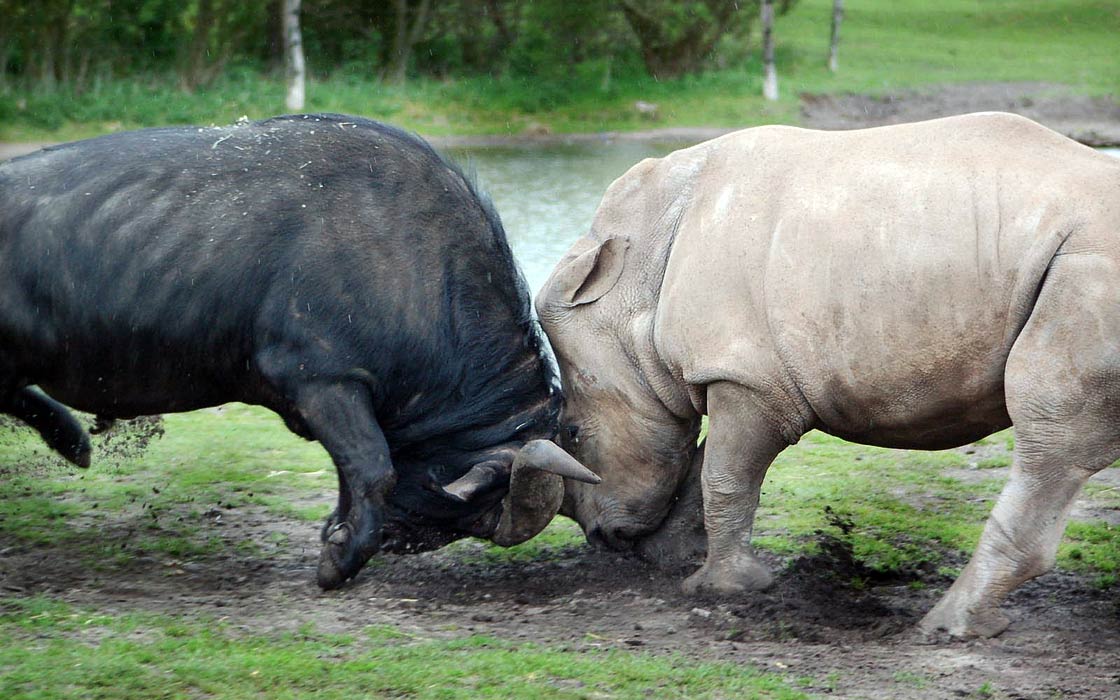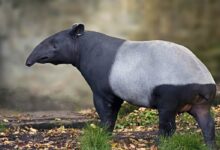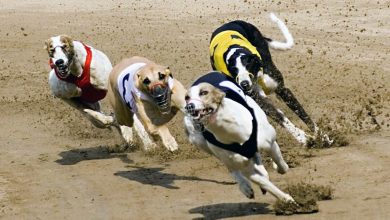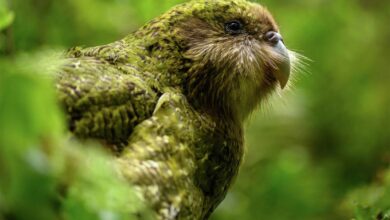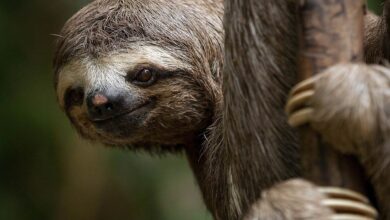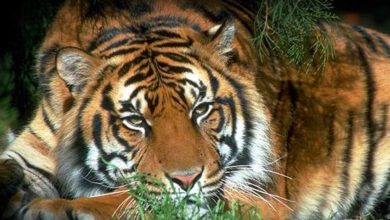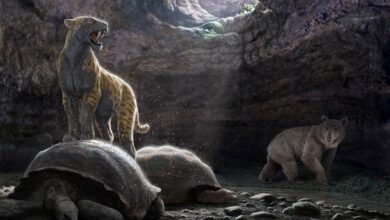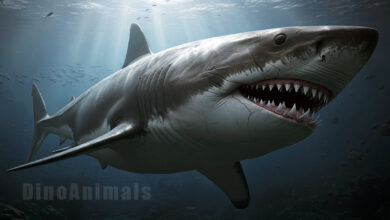African buffalo – Cape buffalo
The African buffalo is a species of cattle that has never been domesticated. This is mainly due to its extremely unpredictable nature, which makes it very dangerous to humans. Contrary to popular belief, it does not come from the same ancestors as modern domestic cattle, and its origin is still unclear.
Classification
- Kingdom: Animalia
- Phylum: Chordata
- Class: Mammalia
- Order: Artiodactyla
- Family: Bovidae
- Subfamily: Bovinae
- Genus: Syncerus
- Species: Syncerus caffer
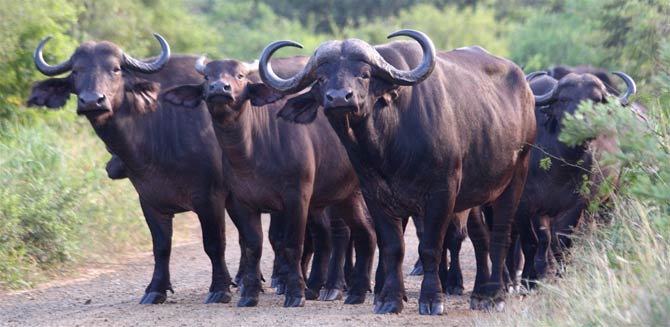
The official classification includes four/five subspecies of the African buffalo:
Cape buffalo (Syncerus caffer caffer)
The most typical and the largest subspecies of the African buffalo. The males weigh up to 910 kilograms (2,010 lb). Its characteristic feature is dark, almost black hair. Most often, it can be found in southern and eastern Africa.
Forest buffalo, dwarf buffalo or Congo buffalo (Syncerus caffer nanus)
The smallest subspecies, its height at the withers does not exceed 120 centimeters (4 ft), and its average weight is about 270 kilograms (595 lb). The hair color of this subspecies is redder with darker patches on the head and shoulders. It is an animal commonly found in central and western Africa.
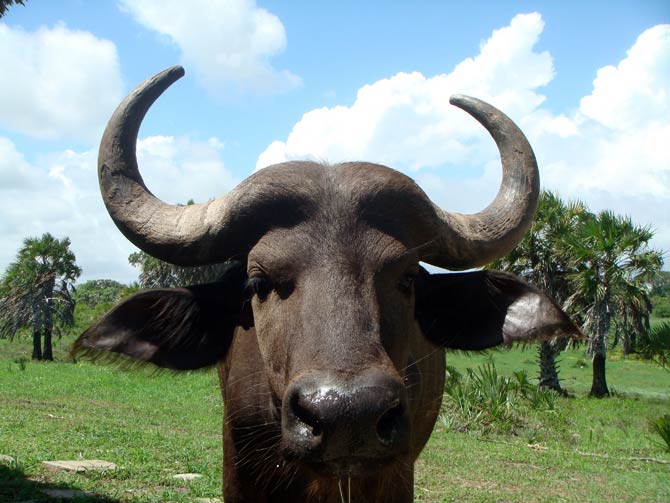
Sudan buffalo (Syncerus caffer brachyceros)
It is an intermediate subspecies between the two mentioned above. It occurs in West Africa.
Nile buffalo (Syncerus caffer aequinoctialis)
It occurs in the savannas of Central Africa. It is similar to the Cape buffalo, but smaller. Its color is lighter. The Nile buffalo is sometimes considered the same as the Sudan buffalo.
Mountain buffalo or Virunga buffalo (Syncerus caffer mathewsi)
It occurs in East Africa, but not all researchers agree that this animal is classified as a subspecies of the African buffalo.
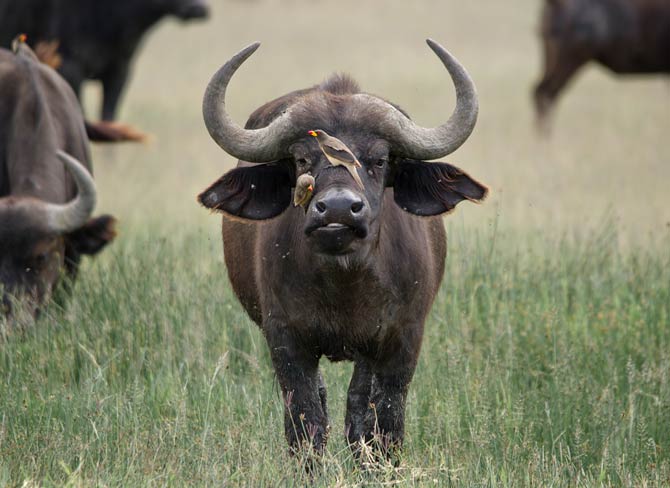
Occurrence
The range of the African buffalo ranges from open savannah to dense, moist tropical forests. It lives in countries such as Zambia, Sudan, Zimbabwe, Mozambique, Botswana, Namibia, Kenya, Tanzania and South Africa.
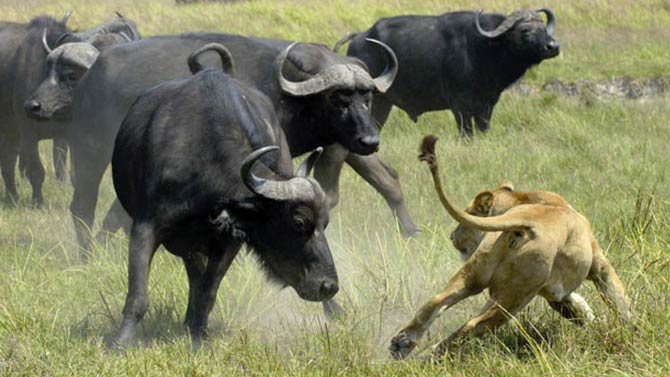
Characteristics
African buffalo are a very hardy species of animals. Compared to other, large Bovidae, they have a long but stocky body. Their legs are also quite short and very massive, which makes the body height of the African buffalo relatively low. The head of these animals is situated quite low – below the back line. The front hooves of the animal are wider than the hind hooves – the front part of the body is heavier than the rear part.
A very interesting structure is also created by the horns of the African buffalo, which in adults connect with each other at the base, creating a continuous “cover” of bone. It is so durable that sometimes even a bullet from a gun cannot penetrate it.
The horns take a very peculiar shape. First, they diverge to the sides, then bend down, twist upwards in a smooth arc, and then outwards. They occur in both males and females. In female individuals, however, they are on average 10 to 20% smaller. Their endurance also depends on the particular subspecies: the horns of the forest buffalo are much smaller than those of the savannahs buffalo.
The buffalo hair ranges from black to various shades of red. In the savannah species, it is almost black in color, and old bulls have white rims around their eyes. Females, like males inhabiting forests and young of all species, are more reddish-brown in color.
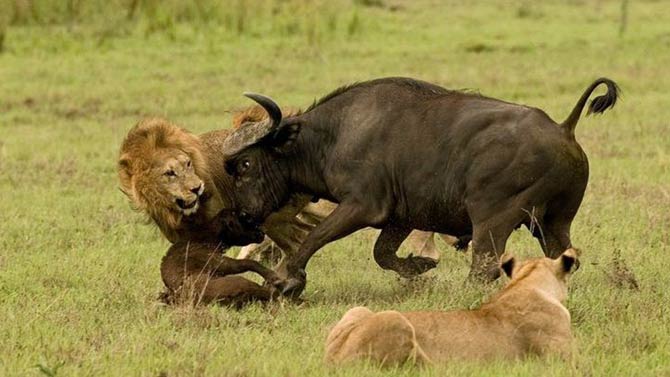
Diet
The main component of the buffalo’s diet is grass, but shrubs and parts of trees also eat. It is very important for them to provide fresh food on a regular basis, and therefore they very quickly suffer from malnutrition when there is not enough food nearby to satisfy their appetite.
Social behavior
The herd size of African buffaloes varies greatly. Usually, these are hierarchical groups with females and their offspring at the center. In the herd, there is also a place for the dominant male, from which other males are kept at a distance. The strongest buffalo in the group is recognized by the thickness of its horns.
During the dry season, males often separate from the herd to form groups of only bulls. They can be divided into two types: consisting of individuals from 4 to 7 years of age and those who have already turned 12 and older.
The characteristic behavior of bulls is duels, in which males usually participate – sometimes it is just a game, and sometimes a real fight for dominance.
If a group is forced to run away from a predator – all its members stay very close to each other and the young run inside. African buffaloes will also respond to every call of a wounded member of the herd – especially a small one, by trying to help it.
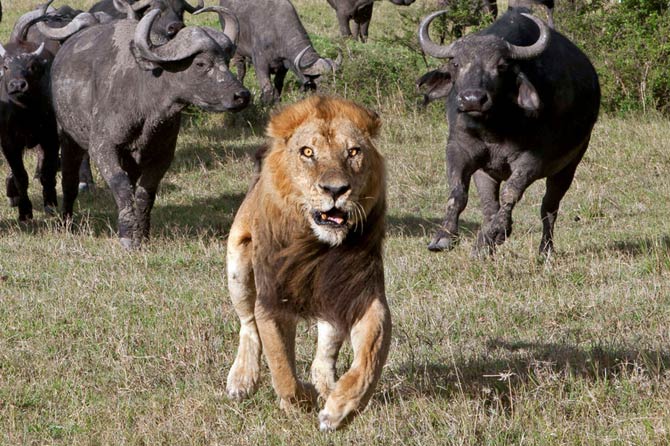
Reproduction and growth
African buffalos only breed during the rainy season. The bull tries to guard its partner so that other males do not have access to her. Gestation in these animals lasts 11.5 months, and the newborn cub remains hidden in the vegetation for the next several weeks. Its mother looks after it, but only occasionally. After joining the herd, the young are always surrounded by adults to make it difficult for predators to access them. They usually reach sexual maturity in the fourth year of life.

Detailed data / Dimensions (size)
African buffalo (Syncerus caffer)
Savannah buffaloes are larger – usually half and heavier than their cousins in forested areas.
- Body length: 170 – 340 cm (5.6 – 11.2 ft)
- Height at the withers: 100 – 170 cm (3.3 to 5.6 ft)
- Tail length: 70 – 110 cm (28 to 43 in)
- Horn span: up to 100 cm (40 in), but not more than 40 cm (16 in) in forest buffalos
- Weight: 500 – 910 kg (1,100 – 2,000 lb)
- forest buffalo: 250 – 455 kg (550 – 1000 lb)
- Lifespan: up to 20 years
- There is sexual dimorphism in buffaloes – females are lighter and smaller than males.
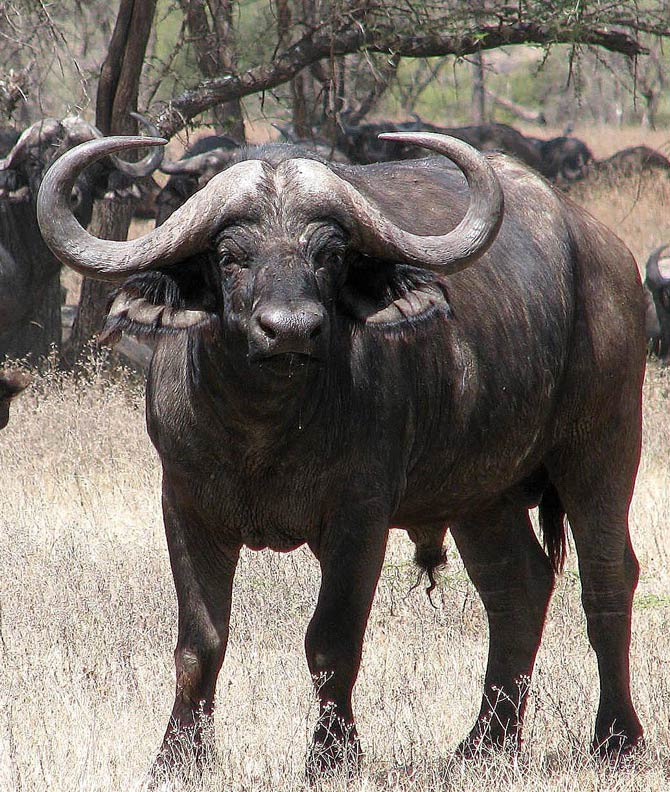
African buffalo – interesting facts
- African buffaloes are considered extremely dangerous animals. Annually, more than 200 people die from their attacks.
- African buffaloes can even attack rhinoceros, as evidenced in the main photo of the article.
- Although the African buffaloes are not an endangered species, their population continues to decline – mainly due to hunting and human territorial expansion.
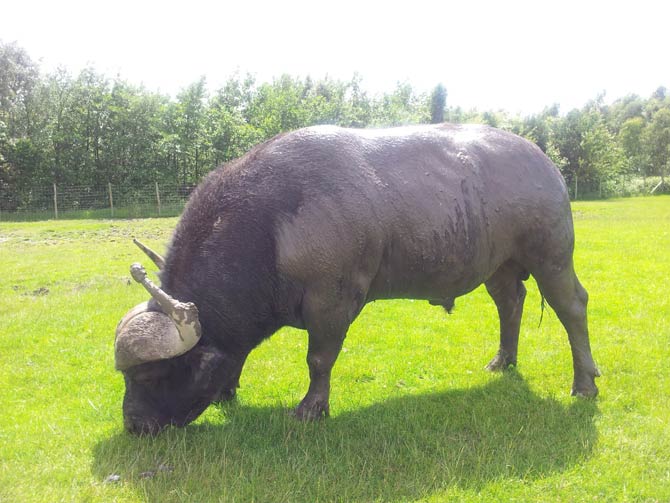
Recommended
- African elephant
- Asian elephant
- White rhinoceros
- Black rhinoceros
- The fastest animals – Top 100
- The fastest birds – Top 10

